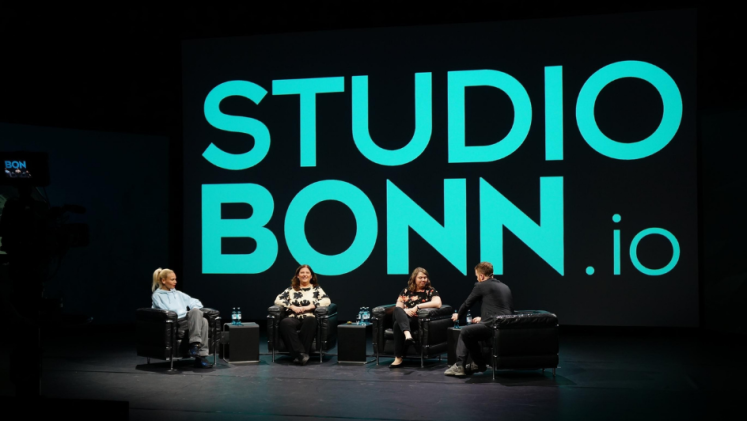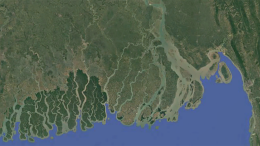For the second year in a row, UNU-EHS participated in the Bundeskunsthalle Bonn’s Global Nerve System event series. In the latest live talk “Living on the Edge”, Interconnected Disaster Risks report authors Zita Sebesvari and Caitlyn Eberle joined musician Aïsha Devi and moderator Kolja Reichert to discuss the report, as well as threats to life on our planet and ways to cope with them.
Launched at the end of October, the report raises the concept of "risk tipping points". These represent critical points beyond which the dependable functioning of essential systems becomes uncertain, significantly increasing the risk of catastrophic consequences.
The degradation of life-sustaining systems, such as those for food and water, is a complex and unpredictable process. Often, a specific threshold of instability within a system exists that, once passed, triggers fundamental changes or even a total collapse within the system. These systems are not isolated. In fact, they are interconnected, meaning that the tipping points, their drivers, root causes and solutions are all interrelated. Our actions, like draining our water resources, damaging nature and biodiversity and polluting both Earth and space, are pushing us closer to these tipping points.
“It is as if we are driving fast toward a dangerous edge. We are not just adding new risks, but are destroying our tools to deal with existing ones,” said Lead Author and UNU-EHS Deputy Director, Zita Sebesvari.
While much of this provided food for thought for the discussion, the talk also centred on the question: If all environmental risks are interconnected, what does that do to our concepts of ourselves and the world?
That is where Devi’s unique perspective as a musician came in. Devi sees electronic music as a portal to collective consciousness but also as a way to practically and mentally deal with the threats we are facing. Perhaps one of the most lasting insights Devi told about herself and her artistic work was on how her work was influenced by our environment.
While living in Berlin, Devi’s flat was located above a restaurant, whose refrigerators were so loud that the noise and vibrations could be heard and felt from stories above. Not only did it affect her sleep, but also her mental health, which led her to negatively perceive her surroundings. However, it helped Devi acknowledge the impact of our built environment on human health. She even went so far as to point out during the event that our society is more oriented around steel than nature.
That thought provided a good point to steer the discussion into the reports five recommended changes we need to make to build a more sustainable, just and equitable future. Those are: creating a world without waste, being one with nature, cultivating a global neighbourhood, being a good ancestor and designing an economy of well-being.
Amongst the five, the one that clearly received the most attention was the report’s call for us to be good ancestors, an idea that challenges us to strive to be stewards of our planet for future generations by ensuring we take actions that will better their lives.
When asked by Reichert on what part of the report resonated with her the most, Devi was quick to acknowledge this call. For Eberle, this was a lasting point she wanted the audience to takeaway.
“Being a good ancestor means to ensure that every action we make will help secure the survival and well-being of future generations,” said Eberle. “This has to motivate us to do more.”





